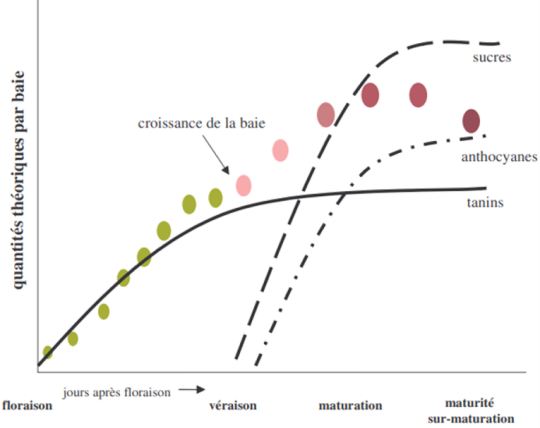Anthocyanins are a good indicator of ripeness and it has been observed that a satisfactory level of ripeness is reached when a significant drop in anthocyanin levels is recorded. At this stage, the pigments have a lower concentration, but the breaking down of the cell walls encourages their diffusion in the liquid phase. Tannins also accumulate in the berry during ripening, their content in the seeds reaches a peak value before véraison. This content then decreases to become stable when the seeds are ripe. As for the tannins in the skins, they also mostly accumulate before véraison, and then more slowly until ripeness, eventually decreasing in concentration in the event of over-ripening.
Monitoring anthocyanins and tannins during ripening is therefore a key parameter in determining the harvest order. The optimal harvest date must take into account both the concentration of anthocyanins/tannins and their optimal extractability as well as the type of wine being produced. For a wine with ageing potential, a later harvest will allow better extractability of phenolic compounds. Conversely, for a lighter wine, the grapes can be harvested earlier to reduce extraction phenomena.

